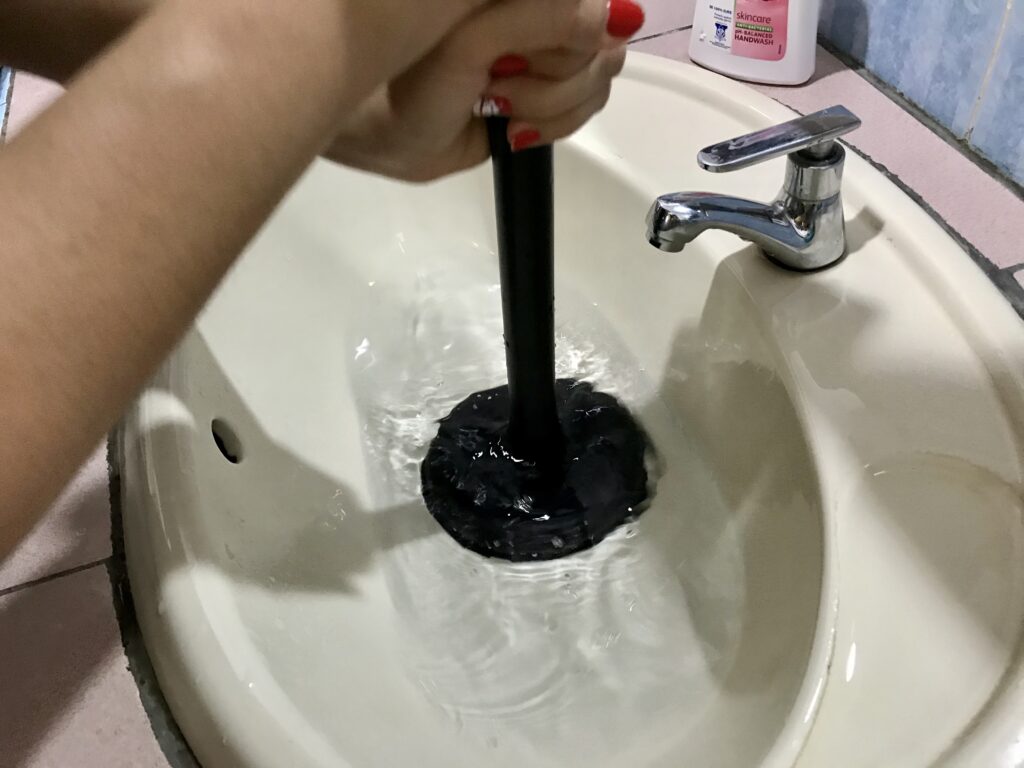
The gurgle of a slow drain or the sight of a backed-up sink can send shivers down anyone’s spine. Clogged drains are not just inconvenient, they can be a breeding ground for bacteria and even cause structural damage if left untreated. This is where the often-overlooked hero of plumbing maintenance emerges: drain cleaning.
Drain cleaning refers to the process of removing clogs and obstructions from your home’s drainage system. It’s a crucial component of keeping your plumbing system healthy and functioning efficiently. There are two main types of drain cleaning:
- Mechanical drain cleaning: This method uses specialized tools to physically break up and remove clogs. Common tools include plungers, drain snakes (also known as augers), and drain-cleaning machines. These tools can access deep within the pipes to tackle tough clogs.
- Chemical drain cleaning: This method utilizes chemical solutions designed to dissolve clogs. These chemicals work by breaking down organic matter like grease, hair, and soap scum. However, chemical drain cleaners can be harsh and damage pipes if not used properly.
Now, let’s delve into the specific challenges of kitchen drain cleaning. The kitchen sink is notorious for experiencing frequent clogs due to the accumulation of:
- Grease: Fats, oils, and grease solidify when they cool down, forming a sticky buildup that traps food particles and debris.
- Food scraps: Leftover food particles, especially rice, pasta, and coffee grounds, can easily get lodged within the pipes.
- Soap scum: Over time, soap scum can accumulate on the inner walls of the pipes, contributing to slow drainage.
Here’s a toolbox of techniques you can try for basic kitchen drain cleaning before calling a professional:
- Boiling water: This simple method can often dislodge minor grease clogs. Pour a pot of boiling water down the drain to melt the greasy buildup.
- Baking soda and vinegar: This classic combination creates a fizzing reaction that can loosen and break down mild clogs. Pour half a cup of baking soda down the drain followed by a cup of white vinegar. Let the mixture sit for 15-30 minutes, then flush with hot water.
- Plunger: A trusty plunger can be effective for clearing clogs that are closer to the drain opening.
If these DIY methods fail, it’s time to consider professional drain cleaning. Here’s what a professional plumber can do for your clogged kitchen drain:
- Drain snaking: A plumber will use a drain snake, a long, flexible cable with an auger at the end, to reach deeper clogs and break them up.
- Hydrojetting: This advanced method uses a high-pressure water jet to scour the pipes and remove even the most stubborn clogs. This method is particularly effective for removing grease buildup.
- Video inspection: In some cases, a plumber may use a video camera to inspect the inside of your pipes. This allows them to pinpoint the exact location and nature of the clog, leading to a more targeted and efficient cleaning solution.
Here are some tips to prevent kitchen drain clogs in the first place:
- Install a drain trap guard: This small device fits over the drain opening and catches food scraps before they enter the pipes.
- Wipe greasy residue from dishes before washing.
- Avoid pouring grease or oil down the drain. Instead, let it cool and solidify, then discard it in the trash.
- Dispose of coffee grounds and food scraps in the compost bin or trash.
By understanding drain cleaning methods and taking preventative measures, you can keep your kitchen drains flowing freely. Remember, addressing minor clogs early on can prevent them from becoming major headaches down the road. So, don’t let a clogged drain disrupt your kitchen routine – tackle it head-on with the right tools and techniques!

